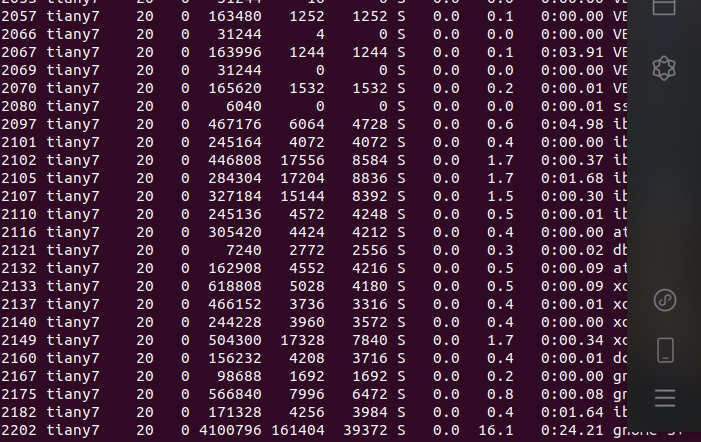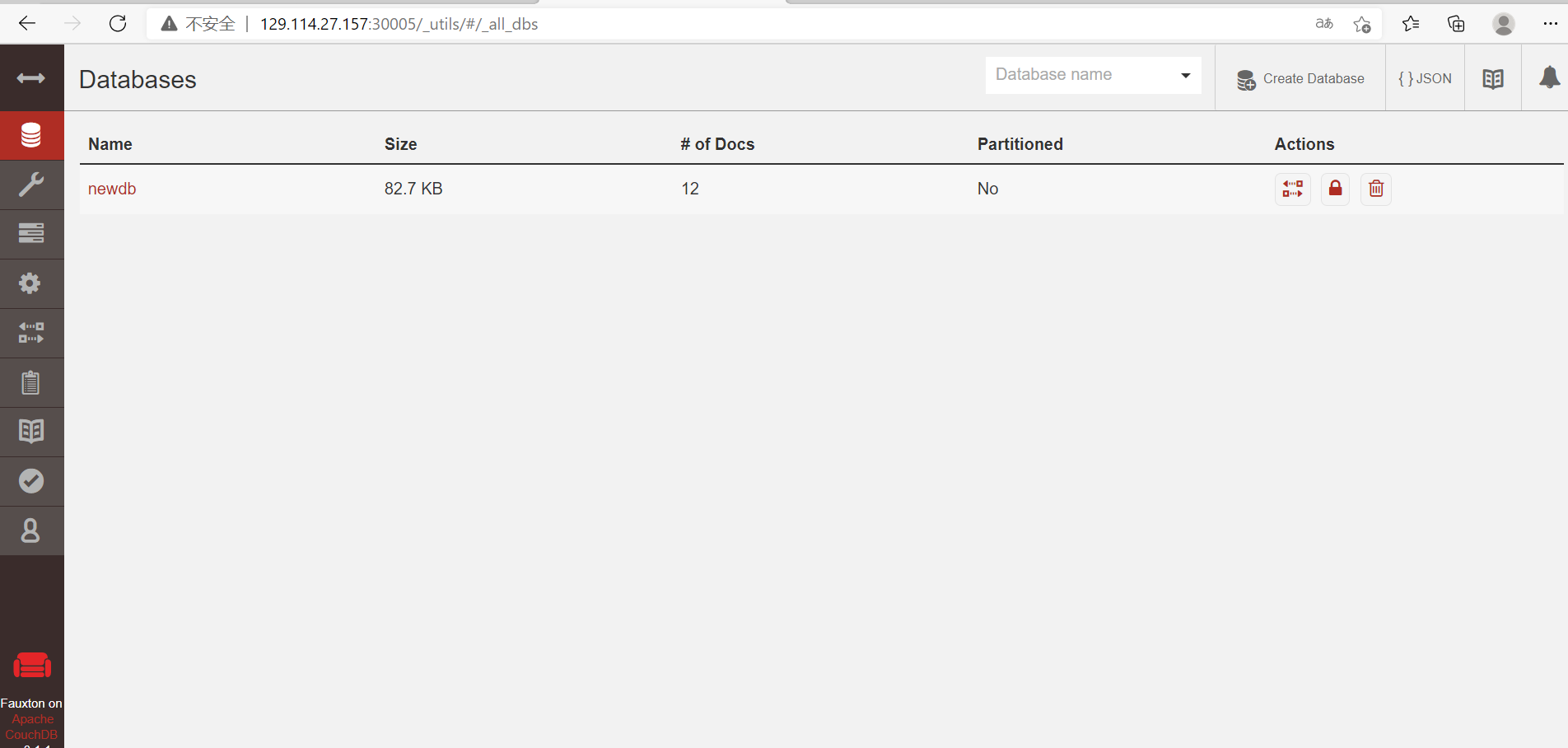Kubernetes 学习笔记-- kafka往couchdb里倒东西
首先吐槽下国内这些论坛的技术精神,不是我崇洋媚外,有些复读机烦不烦啊,别人的东西吃进去吐出来好玩么?
还有一些不懂装懂,这种最可恶,明明自己都不明白自己在写什么,还是往精华区发,简直离谱,知道自己多挣的积分会给新手带来多大的负担么?
这几天的感觉下来,kubernetes感觉并不算是很难的东西,只是因为缺少一个系统性的教程,某些培训班的教程也早已跟不上时代的步伐了,另外技术共享也不能说尽如人意,所以造成了较高的行业壁垒。
所以我就来整理一下吧,如果能帮上后来人的话,那将是莫大的欣慰
首先我们先看couchdb
couchdb的yaml 文件这样写,我已经建好并上传至docker hub了一个开放端口和初始用户密码皆为root的镜像,直接调用就好
tiany7/couchdb_real
然后全套文件这样写:我把容器的5984映射到了主机的30005,对外访问使用30005这个端口
---
# This is a declarative approach to describe a Kubernetes based
# deployment of an application. Since this is YAML, the indentation
# is very important
apiVersion: apps/v1
kind: Deployment # We are testing the Deployment resource
metadata:
name: couch-deployment # A name must be given to the deployment in the metadata section
spec: # This is the specification where we can even put the number of replicas
replicas: 1 # Say we want to run 3 replicas of nginx
selector:
matchLabels:
app: couch-server-app # 这个要前后一致,相当于主键索引找到这个service/deployment
minReadySeconds: 5 # if anything crashes before 5 secs, the deployment is not
# considered as ready and available. Default value is 0
template: # Specified info needed to run the pod and what runs in the pod
metadata:
labels:
app: couch-server-app # some label to give to this pod (see the matching label above)
spec: # actual specification
containers:
- name: couchdb # Used by DNS
image: tiany7/couchdb_real # this is the image name on hub.docker or if you have one locally. We use an older
# and then show how we can upgrade to newer version
imagePullPolicy: IfNotPresent # This forces the node to pull the image
ports: # Since nginx is a web server, we let it listen on port 80 in the container
- containerPort: 5984
---
apiVersion: v1
kind: Service
metadata:
name: couch-server-app
spec:
type: NodePort # by using NodePort, the service is published to outside world.
ports:
- protocol: TCP # this is default (so not needed either)
port: 5984 # the port used by the server inside the pod/container
nodePort: 30005 # this is what will be externally published
selector:
app: couch-server-app
---
apiVersion: v1
kind: Pod
metadata:
name: couch-service
spec:
containers:
- name: couch-service
image: tiany7/couchdb_real #这个是我自己的镜像,功能之前说过了,大家不介意的话可以直接调用
imagePullPolicy: IfNotPresent
ports:
- containerPort: 5984
hostPort: 30005
...
然后如果访问端口(curl)出现no host to route的话记得是不是在service那里写了selector,一定记得!
之前记得一定要ufw allow <端口>你需要的端口
然后apply一下
sudo kubectl apply -f couch-deployment.yml
应该就能看到数据库在运行了
打开自己的公共ip:30005/utils/#

这不就看到了么
然后我们来看zookeeper的配置
这个是zookeeper的yaml file,昨天跟着博客园配置了好几版,是错的,这个囊括了service和deployment,我的两台机器public ip是128.114.xx.xx,到时候换成你们的就行
apiVersion: apps/v1
kind: Deployment
metadata:
name: zookeeper-deploy
spec:
selector:
matchLabels:
app: zookeeper-1
replicas: 1
template:
metadata:
labels:
app: zookeeper-1
spec:
hostname: zookeeper-1
nodeSelector: # this shows how you force k8s to schedule the pod on a specified node
kubernetes.io/hostname: vm2vv-2 #自己的vm节点名称,用kubectl get nodes可以查看23333
containers:
- name: zoo1
image: digitalwonderland/zookeeper
imagePullPolicy: IfNotPresent
ports:
- containerPort: 2181
env:
- name: ZOOKEEPER_ID
value: "1"
- name: ZOOKEEPER_SERVER_1
value: zoo1
---
apiVersion: v1
kind: Service
metadata:
name: zoo1
labels:
app: zookeeper-1
spec:
selector:
app: zookeeper-1 # used to match the pod(s) that run the actual matinv server
ports:
- protocol: TCP # this is default (so not needed either)
name: client
port: 2181 # the port used by the server inside the pod/container
- protocol: TCP # this is default (so not needed either)
name: follower
port: 2888 # the port used by the server inside the pod/container
- protocol: TCP # this is default (so not needed either)
port: 3888 # the port used by the server inside the pod/container
name: leader
执行命令
sudo kubectl apply -f zookeeper_setup.yml
然后是kafka的配置,记得,kafka需要zookeeper作为基础建设,所以先等zookeeper跑起来之后才能启动kafka
kafka的yaml配置:
ind: Deployment
apiVersion: apps/v1
metadata:
name: kafka-broker0
spec:
replicas: 1
selector:
matchLabels:
app: kafka
id: "0"
template:
metadata:
labels:
app: kafka
id: "0"
spec:
containers:
- name: kafka
image: wurstmeister/kafka
ports:
- containerPort: 9092
env:
- name: KAFKA_ADVERTISED_PORT
value: "30001"
- name: KAFKA_ADVERTISED_HOST_NAME
value: 129.114.25.68
- name: KAFKA_ZOOKEEPER_CONNECT
value: zookeeper-1:2181
- name: KAFKA_BROKER_ID
value: "0"
- name: KAFKA_CREATE_TOPICS
value: utilization:1:1#自己topic的名字,记得改啊
---
apiVersion: v1
kind: Service
metadata:
name: kafka-service
labels:
name: kafka
spec:
ports:
- port: 9092
name: kafka-port
protocol: TCP
nodePort: 30001
selector:
app: kafka
id: "0"
type: NodePort
记得我的配置除了公共ip和端口都可以拿去通用
然后执行
sudo kubectl apply -f kafka_setup.yml
这个yml可以自己定义名字和yaml/yml后缀
然后我们执行完之后就能从本地收发信息了

可以看到执行完之后是有一对kafka/zookeeper在running的,另一个是因为我还没有给他配置zookeeper,所以no broker available,replica的时候我应该选1的,no matter
然后我们创建了producer和consumer,用python写得,这里只是简单得producer和consumer,大家看一下就成
这个往第三台机子dump数据的代码已经写好了,是用157结尾的进行dump
producer:
import os # need this for popen import time # for sleep from kafka import KafkaProducer # producer of events # We can make this more sophisticated/elegant but for now it is just # hardcoded to the setup I have on my local VMs # acquire the producer # (you will need to change this to your bootstrap server's IP addr) producer = KafkaProducer (bootstrap_servers="129.114.25.68:30001", acks=1) # wait for leader to write to log for i in range (100): # get the output of the top command process = os.popen ("top -n 1 -b") print("here from Yuanhan") # read the contents that we wish to send as topic content contents = process.read () # send the contents under topic utilizations. Note that it expects # the contents in bytes so we convert it to bytes. # # Note that here I am not serializing the contents into JSON or anything # as such but just taking the output as received and sending it as bytes # You will need to modify it to send a JSON structure, say something # like <timestamp, contents of top> # producer.send ("utilization", value=bytes (contents, 'ascii')) producer.flush () # try to empty the sending buffer # sleep a second time.sleep (1) # we are done producer.close ()
然后是consumer
import os # need this for popen import time # for sleep from kafka import KafkaConsumer # consumer of events import couchdb # We can make this more sophisticated/elegant but for now it is just # hardcoded to the setup I have on my local VMs # acquire the consumer # (you will need to change this to your bootstrap server's IP addr) consumer = KafkaConsumer (bootstrap_servers="129.114.25.68:30001") # subscribe to topic consumer.subscribe (topics=["utilization"]) user = "root" password = "root" couchserver = couchdb.Server("http://%s:%s@129.114.27.157:30005" % (user, password)) #db = couchserver['mydb'] db = couchserver.create('newDB') # we keep reading and printing it = 0 for msg in consumer: # what we get is a record. From this record, we are interested in printing # the contents of the value field. We are sure that we get only the # utilizations topic because that is the only topic we subscribed to. # Otherwise we will need to demultiplex the incoming data according to the # topic coming in. # # convert the value field into string (ASCII) # # Note that I am not showing code to obtain the incoming data as JSON # nor am I showing any code to connect to a backend database sink to # dump the incoming data. You will have to do that for the assignment. doc = {'foo': str(msg.value, 'ascii')} db.save(doc) if it > 10: break it += 1 print(str(msg.value, 'ascii')) # we are done. As such, we are not going to get here as the above loop # is a forever loop. consumer.close ()
好了,之后我们从本地的kafka那里执行
sudo bin/kafka-topics.sh --describe --topic utilization --bootstrap-server 129.114.25.68:30001

这不就在在这么?
然后在kafka所在pod机器启动consumer.py
当当当当!


我们可以在数据看见数据了!
这个作业花了两周时间才想明白怎么搞,因为资料极度匮乏,所以自己只能凭借自己的仅有的印象在这xjb摸索,当时想的是,要是这些东西有现成的代码资料可以参考就好了,但很不幸,只有残缺不全的资料,不过最后也算是摸出来了,真的,我感觉在所有知识传播的路上仍然任重道远
自己学会一门知识远没有让这门知识服务于更多的人有价值,再接再厉,我有ansible playbook自动化的版本,可以私信我发你
终于可以搞cf了,我要在退役前上紫!

